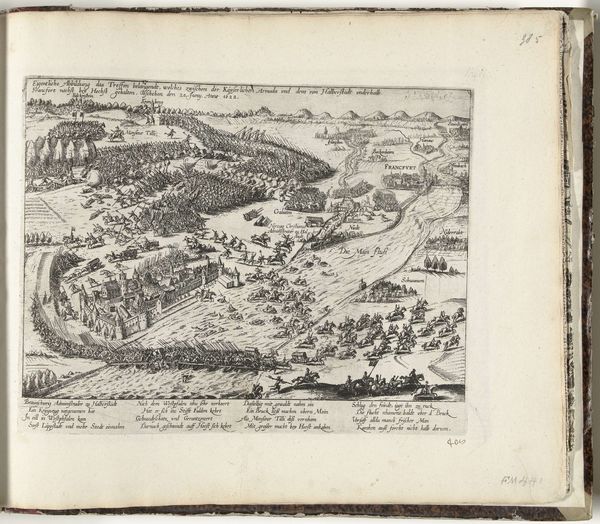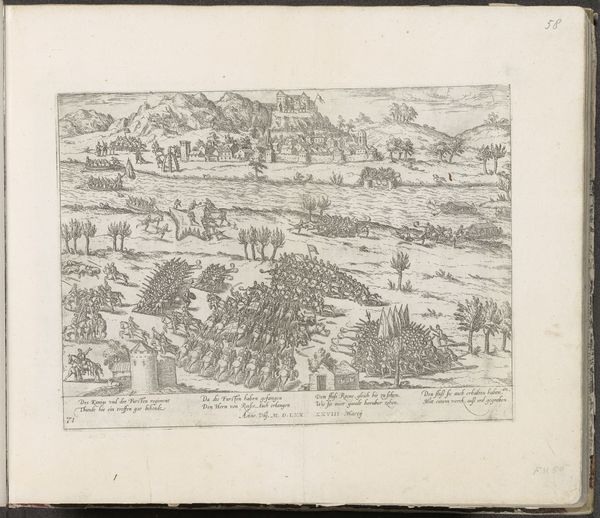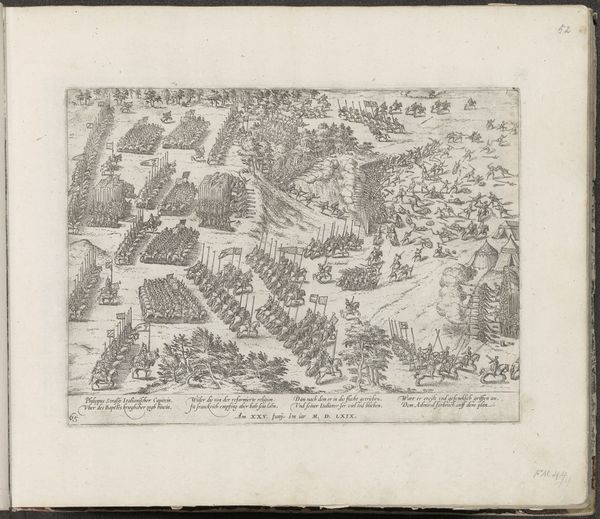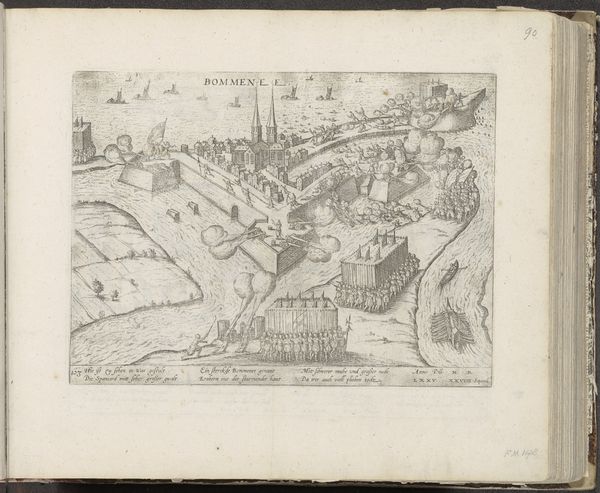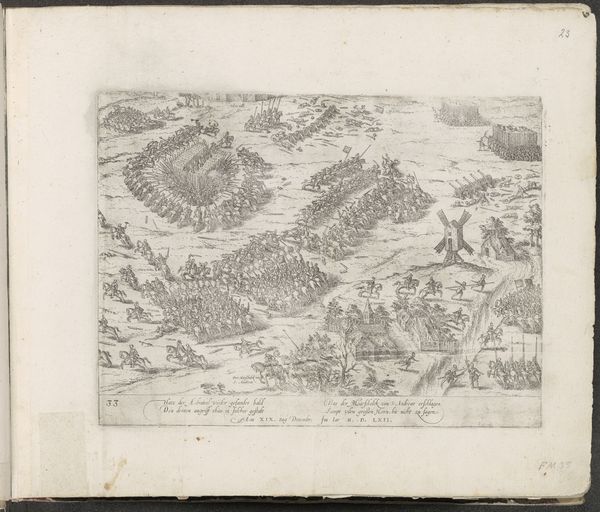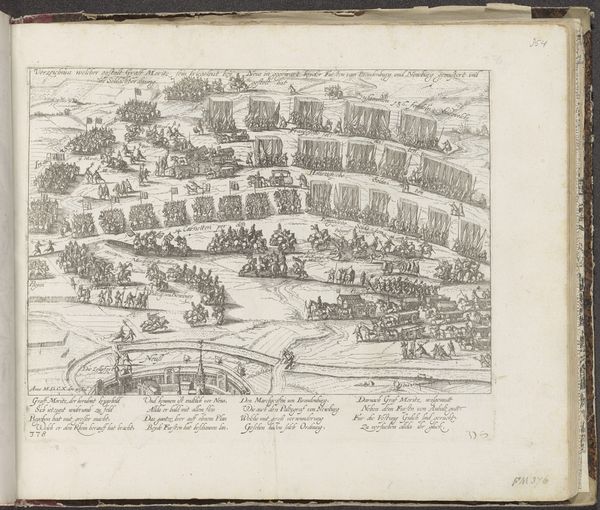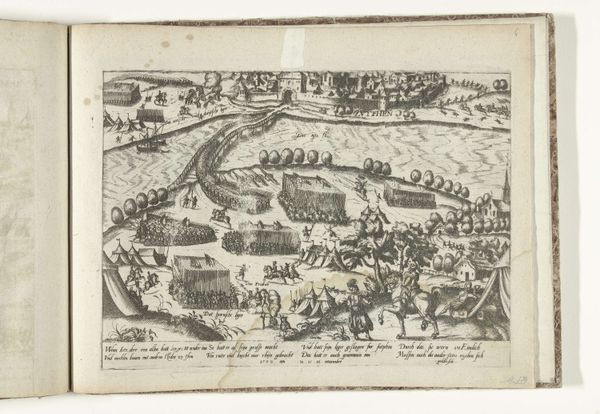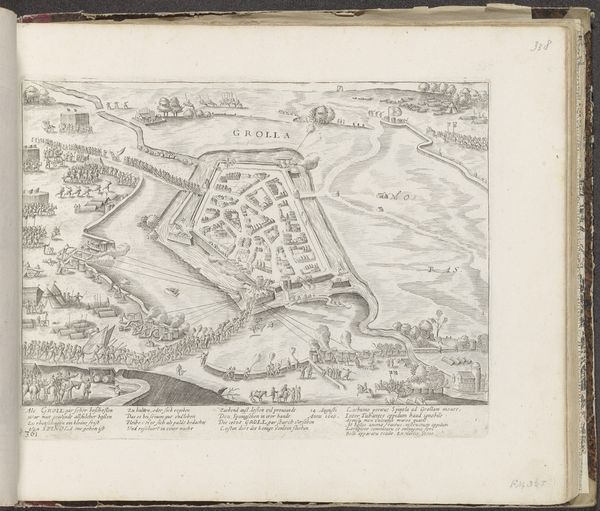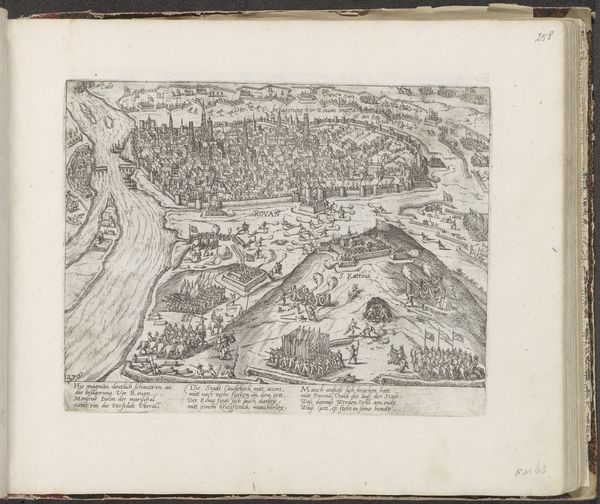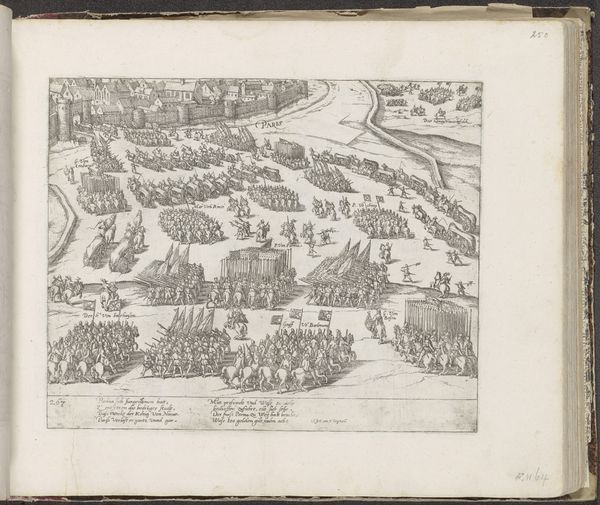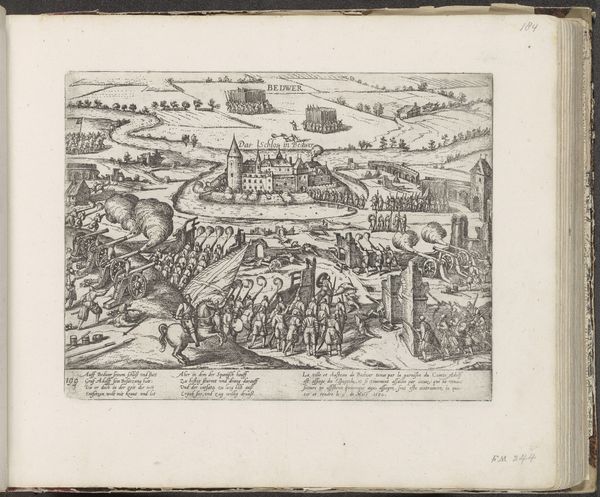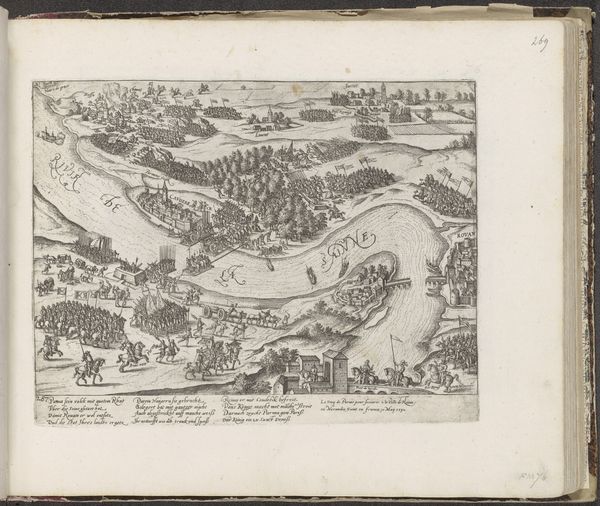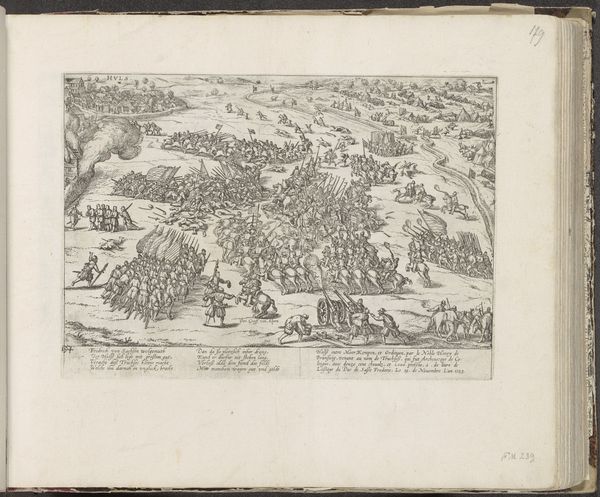
print, engraving
# print
#
11_renaissance
#
genre-painting
#
history-painting
#
engraving
Dimensions: height 215 mm, width 291 mm
Copyright: Rijks Museum: Open Domain
Editor: Here we have "Roermond door Willem van Oranje ingenomen, 1572," a print made by Frans Hogenberg around 1574-1578, currently held in the Rijksmuseum. The detail is incredible, but it almost feels like a blueprint or diagram, more than an attempt at heroic depiction. What can you tell me about it? Curator: I see an intriguing exploration of printmaking as a form of mass communication. Engravings like this were vital tools. Let’s consider Hogenberg's labor; the physical act of etching the metal plate, creating a repeatable image that could disseminate a specific political viewpoint quickly, and broadly, throughout the Netherlands, especially given that this depicts the taking of Roermond. What choices led to this depiction? Editor: You're saying that it’s less about aesthetic skill and more about the efficiency of delivering a message. I mean, the figures are quite small. Curator: Exactly. Consider the materiality of the print itself. How easily could it be reproduced and distributed? Was paper readily available? Who had access to this kind of information? Also, think about who would have consumed this image. Not the soldiers themselves, I imagine, but rather wealthy burghers or nobility who would have interpreted the imagery as a sign of Dutch progress, a visual assertion of power against the Spanish. The creation of imagery solidifying new state identities relies entirely on labor. Editor: So it's a piece of propaganda created using specific means of production for a particular audience and a very pointed message? Curator: Precisely! What’s interesting is to look past the surface of the subject matter itself, and understand the context of production and the impact this relatively "low" art form had on solidifying identity at the time. It blurs the line between documentation, art and statecraft. Editor: I hadn't thought about how this piece fits into the bigger picture of Dutch society, especially since I initially focused only on the art. Curator: By considering the material, production, and distribution, you see that this work shows the socio-political currents that created it and, that it, in turn, helped shape.
Comments
No comments
Be the first to comment and join the conversation on the ultimate creative platform.
